It’s all in the Details (click on any pic to enlarge)
I figured we have a little fun and talk about the importance of background details and thinking things through. I do not profess to be an expert, but I do know that the more I am willing to invest in my world, the believable it becomes. I do not enjoy comics personally that tend to ignore environments or do not take the time to develop them. Yet I also realize that developing a world and learning to draw environments takes a lot of extra time and commitment, yet when that it done those stories become much more solid.
Above is the town of Heartleaf a location that has been mentioned several times in the Bean. In the upcoming comics, we actually will visit it. I could have approached this two ways, when I created this. The first is the straight box effect. Cookie cutter Box buildings on open page with no life. Quick and dirty. Yet I would have lost the desired effect of a little farm town in the middle of a forest.
So I take a more complex approach. I looked at little towns and communities. I figured out a few things 1 population. Heartleaf has to have a population of about between 1000 to 1500 people. Two it was a farming community so there would have to be farm land. Three the town would prob have a central location, I took this from several argentine communities, with a central park and the town about it. With that in mind I was able to start my illustration.
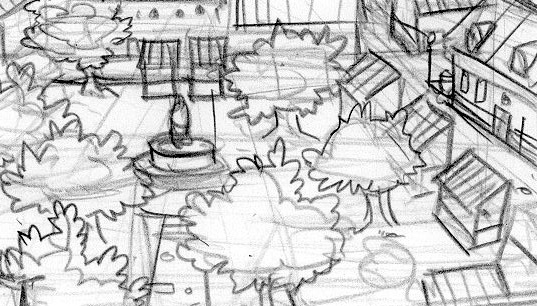 The Park or Bazaar. I started with the park. There would have to be trees and stalls for vendors to sell their wares. I knew that the outlying farms and communities would bring their goods to heartleaf to sell. They would need a central location since prob most people of the town would not want them knocking on their doors. Water is important as well for these people and so in the central of park there is a statue and well for the vendors.
The Park or Bazaar. I started with the park. There would have to be trees and stalls for vendors to sell their wares. I knew that the outlying farms and communities would bring their goods to heartleaf to sell. They would need a central location since prob most people of the town would not want them knocking on their doors. Water is important as well for these people and so in the central of park there is a statue and well for the vendors.
Pubs, Workshops, Stores: Now in building the town around I realized that the outdoor vendors would need services so I built services around the park. 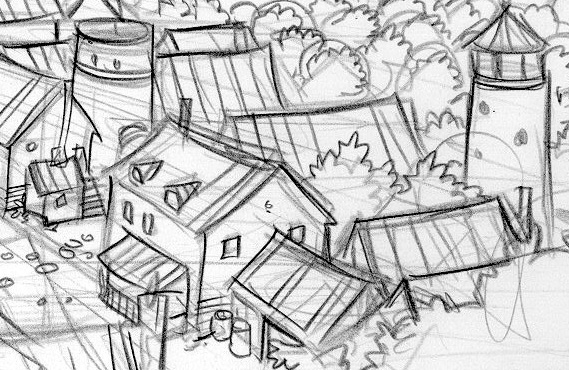 There were have to be places to bring animals (the blacksmith) and also places that would make goods like jars and jugs. Sine the shot is far away I wanted to a least see the large doors that would open to these places of business. There would also be a bookstore and possibly a slaughter house but that would be more on the outskirts. I also have a clothing shop and few other locations. The residents either live above shops or on the outskirts away from the central market.
There were have to be places to bring animals (the blacksmith) and also places that would make goods like jars and jugs. Sine the shot is far away I wanted to a least see the large doors that would open to these places of business. There would also be a bookstore and possibly a slaughter house but that would be more on the outskirts. I also have a clothing shop and few other locations. The residents either live above shops or on the outskirts away from the central market.
There woul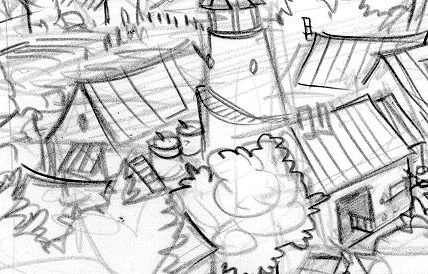 d also be pubs for farmers, if you look that pub in the bottom pic also has a brewery attached. You can see the stables of the local blacksmith as well, plus a cart. There are lights but those will appear when I add the inks.
d also be pubs for farmers, if you look that pub in the bottom pic also has a brewery attached. You can see the stables of the local blacksmith as well, plus a cart. There are lights but those will appear when I add the inks.
I also hope you notice the roofs of the buildings, they are slanted. There is a reason for this and that is for the climate of the area. It snows and so we have to make sure the building architecture fits the climate of the area. Hence the slanted roofs.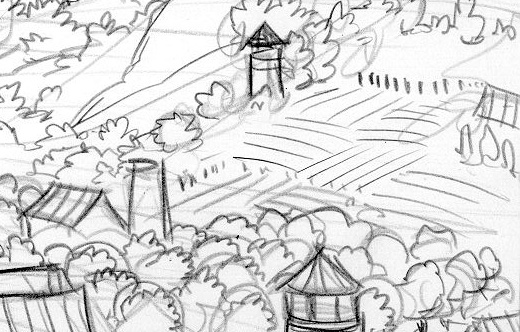
The Farms: Since Heartleaf is a farming community I needed to look at how they would deal with that in a forest environment. As farmers that have been around for awhile they cleared off much of the hillsides, planted orchards as well, and have spent over many generations embedding themselves into the land.
This took some research. I needed to see how places like this would work, both modern and ancient. It help create a social structure into the story. One that created classes and professions for the main characters to interact with. By planning this out a little ahead of time it allowed to create a realistic town. One that flowed with the landscape. Instead of just plopping it there.
I did not create every little individual or occupation. My goal was to gather information quickly, sketch out a few ideas and map out the town and go from there. I had to do this quickly so I could continue on with the story. If you take too much time developing you forget the story, which is the most important part.
So that’s it in a nutshell. There is much more that went into this. The inks will really bring out the town and you can see how even the town itself does not sit perfectly with each other. That bit of movement creates realism.
So any thoughts? Questions? I hope you enjoyed a little preview into the future of bean and little window of how I start my process.
Until next time
trav

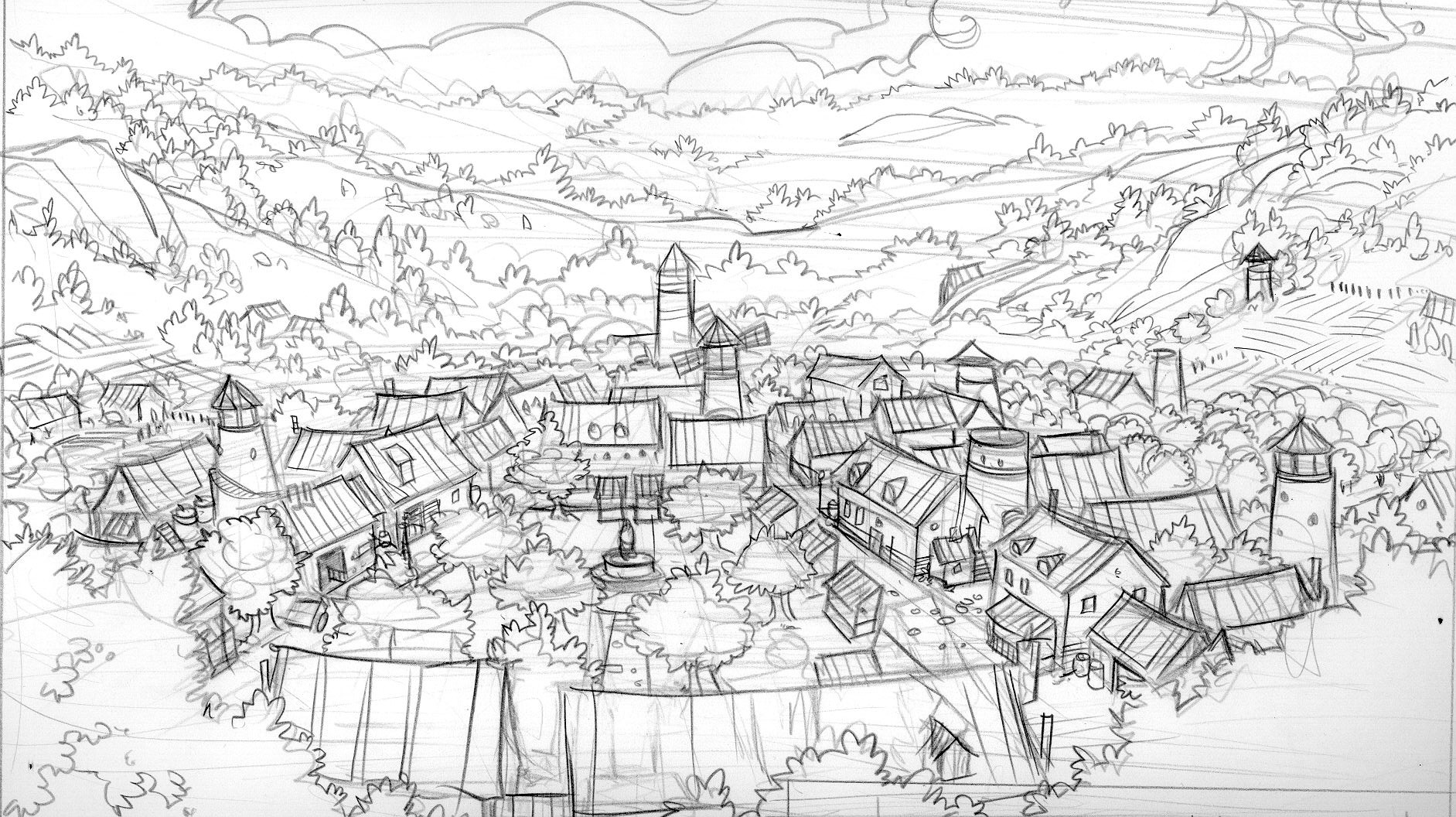
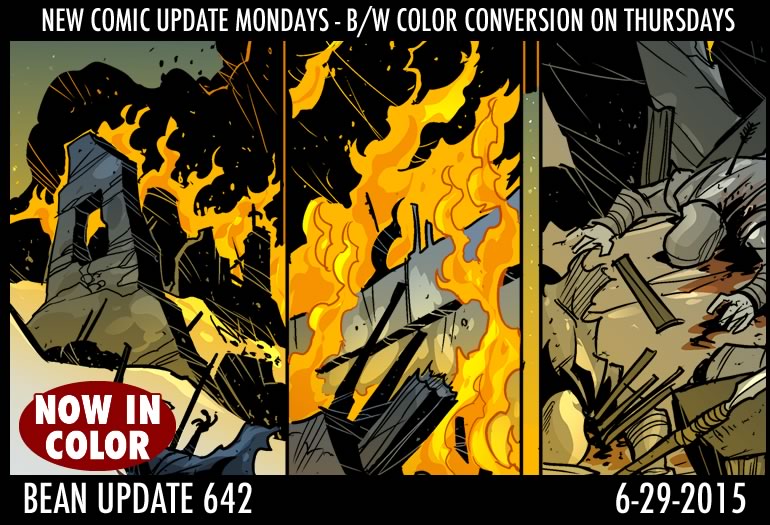
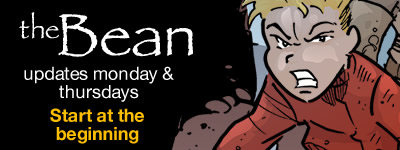
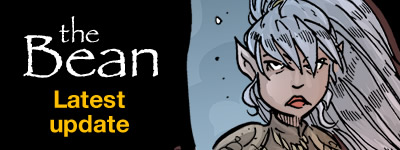
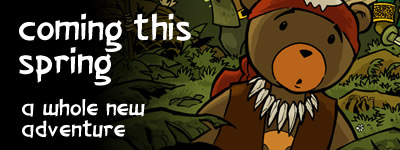



I can't say enough good things about the atmospherics of your art. It's so immersive!
Sven Böttcher
the young Hero find “the sword” and must proof himself against a huge Monster. Hmm.. with the last Page i hear the “Bossfight Theme” from Secret of Mana.
Rumblefeather
Bob!!!! Oh goddess!!!!! What have they done to you?!